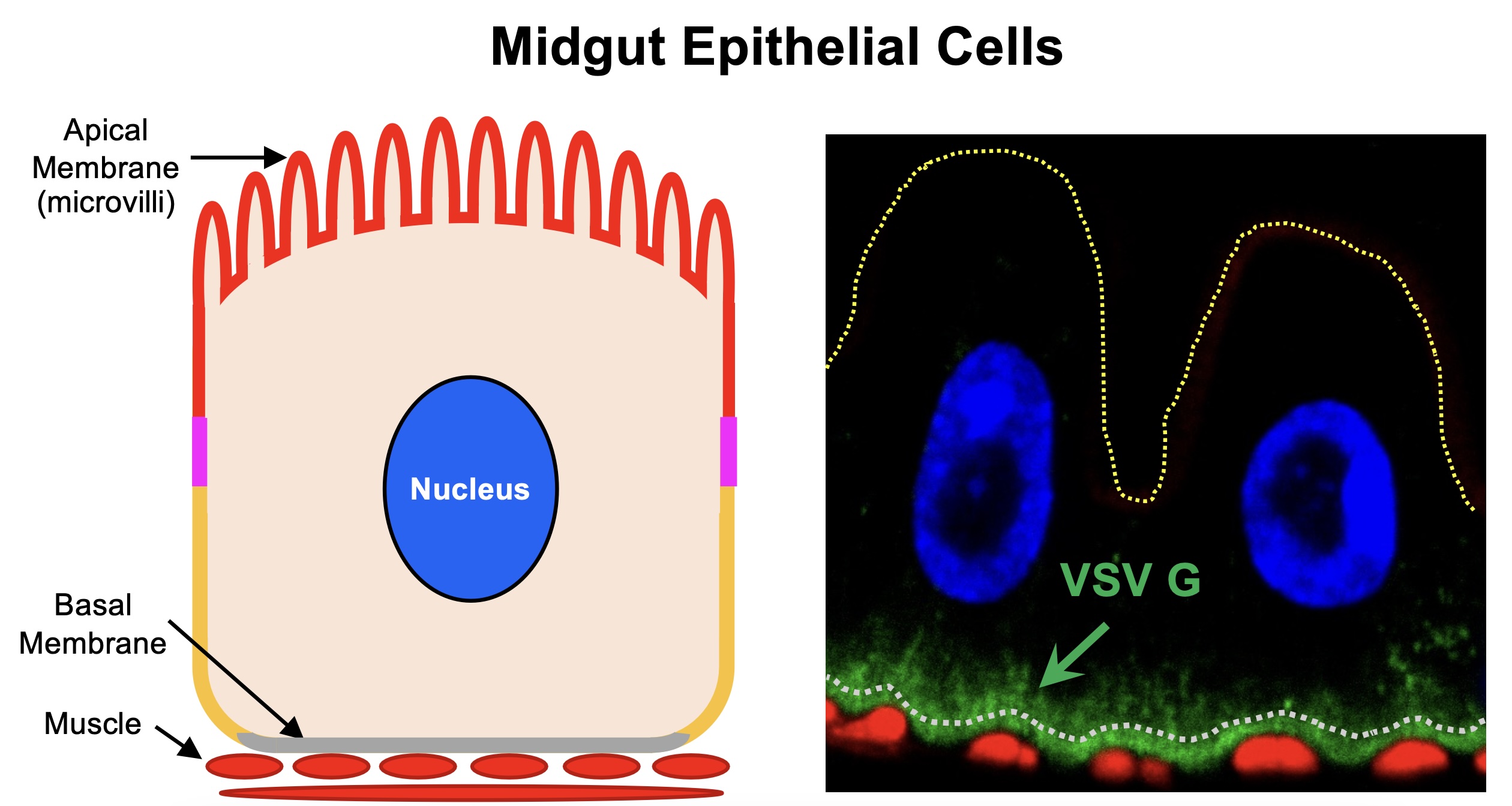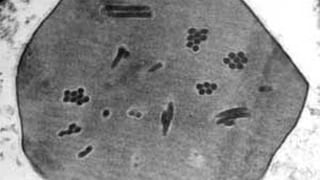Gary Blissard

Studies in the Blissard lab are focused on understanding the biology and pathology of viral infections and interactions in insect cells. In general, our studies can be subdivided into studies of a) baculovirus biology and pathology, b) viral envelope protein structure and function, and c) gene expression in virus infected cells.
The baculoviruses are large DNA viruses that have been used for biological control of insect pest species. In addition, baculoviruses have been developed as powerful gene expression systems for producing eukaryotic proteins in both research and industrial applications. More recently, baculoviruses have been examined as potential vectors for human gene therapy. One important thrust of our work is basic studies of the glycoproteins found in the virus envelope, and the roles of viral envelope proteins in viral attachment, entry, and exit. Another major research focus in our lab is the study of viral and host gene expression over the course of the infection. We are using next-generation sequencing technologies to examine the details of viral and host cell gene expression as infection progresses in baculovirus-infected insect cells, using both cultured cell lines and midgut tissue of host insects
Previously, we have used the baculovirus, AcMNPV, and the baculovirus GP64 envelope glycoprotein as models for our studies. We have developed AcMNPV-permissive cell lines to examine both viral envelope protein requirements, as well as cellular factors involved in entry and egress. Our recent studies suggest a model in which the promiscuous nature of baculovirus entry (which has been exploited in mammalian cell transduction systems) appears to result from recognition of, and interactions with negatively charged host membrane phospholipids. We found that this interaction appears to be mediated by specific regions of the so-called fusion loops of the major envelope glycoprotein, GP64. Our studies of GP64 have identified domains and specific amino acid positions important for virus-cell attachment, and we have also examined domains and amino acids required for the pH-triggered conformational change associated with membrane fusion during viral entry. Our studies of viral egress demonstrated that components of the cellular vacuolar protein sorting system (the cellular ESCRT pathway) are essential for baculovirus egress from infected cells. Thus, baculoviruses appear to hijack the cellular ESCRT pathway for egress from the cell.
In addition to the above studies, we are currently directing our efforts to the study of virus-insect interactions in the insect midgut. The polarized trafficking of viruses across this epithelial cell layer represents a critical virus-insect interaction that is essential for most insect-vectored viruses, but one that is not well understood in any system. Our studies focus on both identifying cellular interacting proteins and pathways that mediate polarized trafficking in the midgut, and understanding viral and cellular transcriptional responses in insect midgut cells from permissive and non-permissive hosts. We expect that our studies will have impacts on the understanding of pathogenic viruses of insects, as well as plant and animal viruses that are vectored by insects. In these studies, our goals are to generate new tools and methods for the study of the many viruses that traffic across the insect midgut epithelium.
-
Researchers Sequence Genome of “Gluttonous” Tobacco Hornworm
BTI's Gary Blissard and Michael Kanost of Kansas State University led a team of 114 researchers from 50 institutions and 11 countries to sequence the genome of this important insect model. Read more » -
Why Teachers Spend Their Vacation Days at BTI
Ongoing relationships with teachers enable Education and Outreach to host valuable professional development workshops on plant and insect science for dedicated teachers. Read more » -
Invisible Viruses in Everyday Food
Most people get a daily dose of virus in the form of plant or insect viruses that are harmless to humans. Consuming the occasional plant or insect virus should be the least of our worries. Read more »








